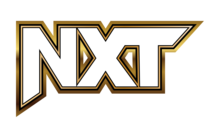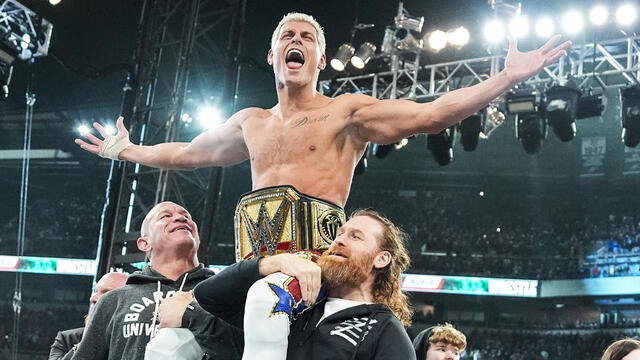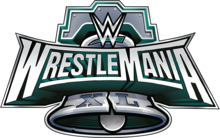Where Are They Now? Dean Malenko

“I had about a 30-minute window to get to the hospital or I wouldn’t be having this conversation with you.”
Dean Malenko was remembering the day in late November of last year when a heart attack nearly killed him. It happened suddenly early one morning when health problems were the furthest thing from his mind. He was only 50, active, had worked out for years. Things like that didn’t happen to guys like him.
But there he was, sweating profusely and losing consciousness as his friends rushed him to the hospital. Here, he would discover he had 100 percent blockage in his main artery — the kind of episode most men don’t come back from.
“They call it the ‘widow maker,’” Malenko said. “It’s actually what John Ritter died of.”
It nearly took Malenko's life, too. In fact, he went under for nearly three minutes before resuscitation and defibrillators pulled him back. For just a moment, he was dead. It’s a morbid thought, but Malenko looked at it like this: “I now get a second opportunity at life.”
If Dean’s second life started on that day then his first life began in Tampa, Florida, in 1960. The son of Boris Malenko, one of Florida’s most hated grapplers, he was guaranteed an out-of-the-ordinary childhood from the very beginning.
“It was hard to get friends to come over the house,” Malenko said with a laugh. “It was like, ‘Is your dad going to kill me?’”
As a boy, Malenko saw America from the backseat of his father’s station wagon as the family traveled around the country in search of Boris’ next payday. These formative years were spent in beer-soaked rafters and dingy locker rooms where the oddball characters his father battled in the ring confused and frightened him.
"Haystacks Calhoun I still remember to this day, because when I first met him I cried," Malenko said of the 650-pound wrestling icon. "I was so upset, because he was so big — bigger than life as a kid."
It was an uncommon lifestyle that Malenko had no plans of pursuing, but fate took its course. An exceptional amateur wrestler in high school, he had aspirations of succeeding in the sport, but an auto accident in his teenage years brought a sudden end to those dreams. Unsure of what to do with himself, Malenko began training at his father's Tampa wrestling school under renowned grappler Karl Gotch.
Gotch, a hard-nosed Hungarian Jew who survived the Holocaust, was known as the "God of Wrestling" in Japan for his unmatched influence on the craft. A legit tough guy, he had been all but blacklisted by American promoters after breaking former WWE Champion “Nature Boy” Buddy Rogers’ hand in a scuffle. Still, he was a devastating technician and a consummate trainer and his guidance would be an invaluable asset in Malenko’s evolution into one of the masters of the mat. (PHOTOS)
But Malenko did not use his family name to immediately walk into a major North American promotion. Instead, he spent his early 20s in the rough rings of Japan where he competed in long, hard-hitting matches with legends like Dynamite Kid and Tiger Mask. It was a grueling way of life, but Malenko loved every minute of it.
“It was such a great experience for me, because I got to see a variety of different styles,” he said. “It gave me a real education of what the business is about.”
Working both as a single and a tag team with his brother, Joe, Malenko began to adapt and expand his style as he locked up with competitors from all over the globe. He learned the catch-as-catch-can technique from England's Marty Jones, brawling from Fit Finlay, lucha libre from an endless array of Mexican masters. These influences would all gel together to give Malenko a completely unique and effective ring style that would wow fans when he finally received his first major North American exposure.
That opportunity would present itself in 1994 when he debuted in ECW. Then known as Eastern Championship Wrestling, the promotion was gaining steam thanks to the dangerous hardcore matches that stars like Sabu and The Sandman had popularized. It should not have been Malenko’s scene, but “The Shooter’s” mat game was quickly embraced by the usually hostile Philly crowds.
"My work stood out, because it was so opposite from what was going down there at the time,” Malenko recalled. “I was un-extreme.”
Over the next year, Malenko captured both the ECW Tag Team Championship and ECW Television Championship, but the crowning achievement of his career would occur on August 26, 1995 when he battled Eddie Guerrero in a classic 2-out-of-3 Falls Match. By all accounts, the dramatic contest is one of the greatest matches in the promotion’s history and the bout that put both Malenko and Guerrero on the map. For Dean, it was not only a career highlight, but a cherished memory with a fallen friend.
"Every year on the anniversary of Eddie's death, I wake up and watch the match," he said.
It would be their last match in ECW, but not their last match together. Following their legendary encounter, Malenko and Guerrero both transitioned to World Championship Wrestling. The doomed promotion has long been the target of negative press, but WCW did showcase some of the most brilliant competitors of all time during a boom period in the mid-90s.
"[WCW] became a nightmare, but for the first two or three years it was good,” Malenko revealed. “That’s when they took a bunch of guys like Psicosis, Juventud [Guerrera] and Billy Kidman and put them in the cruiserweight division and it was fast-paced action. For the American audiences, it was like, ‘Wow.’”
Then known as "The Man of 1,000 Holds" for his technical prowess, Malenko continued to forge a reputation as the best grappler around thanks to amazing matches against the likes of Chris Jericho and Rey Mysterio. In fact, the Florida native's ring skills were so respected at the time that he was voted as the No. 1 wrestler in the world by Pro Wrestling Illustrated magazine in 1997. It was the first time the honor had been bestowed upon a technician and, in many ways, signaled the peak of The Iceman’s career.
There would be other highlights, of course, including a run as a member of a reenergized Four Horsemen, but things in WCW started to sour by '98.
“Once guys like Scott Hall and Kevin Nash ran roughshod over the business, it was not fun anymore,” Malenko revealed. “I saw myself and my comrades around me that loved this business more than anything become very disenchanted. It made it a struggle to go to work.”
Dean existed in this poisonous climate for the better part of a year. He won titles and had solid matches with talented opponents, but he was unhappy. His friends were unhappy, too, and together they were about to stage a walkout that would shake up sports-entertainment.
____________________________________________
1 | 2
WWE Shows Latest Results
Raw results, April 15, 2024: Chad Gable viciously attacks Sami Zayn after losing to Zayn in Intercontinental Title Match!
Full ResultsSmackDown results, April 12, 2024: LA Knight and AJ Styles earn victories for a chance to challenge Cody Rhodes at WWE Backlash!
Full ResultsWWE NXT results, April 16, 2024: Trick Williams defeats Carmelo Hayes in a Steel Cage Match
Full Results













